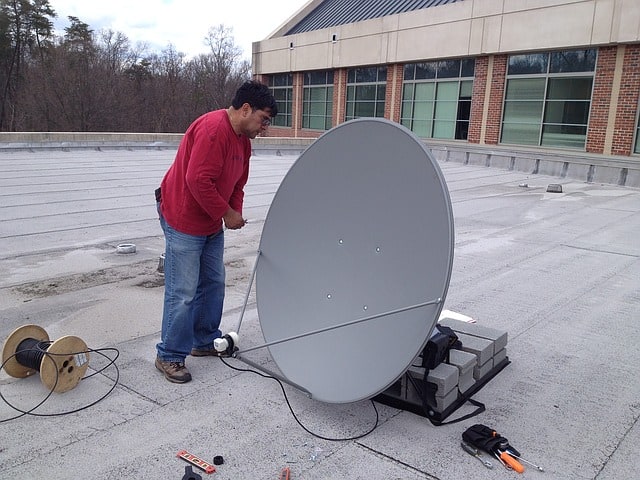How Does Satellite Internet Work?

You can stay connected to your family and friends while also playing games and doing other tasks online with satellite internet. Since this is a different type of internet connection, you might notice a few decreases in your internet speeds at times, especially if there is something blocking your satellite dish or if it’s storming.
The Basics
Once the dish is installed, the provider will make the internet connection by sending a signal through a fiber line to the satellite that’s in space. A signal is then sent back to your dish and transferred to your modem so that you can have internet in your home. The overall process is rather simple and will usually last as long as you have the dish connected for internet services.
Providers
There are a few different providers that you can choose from if you’re thinking about getting satellite internet. Viasat is one of the most popular. You’ll usually spend from $30 a month to $150 depending on the plan that you choose. Download speeds range from 12 to 100 Mbps. There is a data cap ranging from 12 to 300 GB. Viasat tends to offer faster speeds and usually covers larger areas, which means that you’re more likely to be able to connect with this company than others. Another company to consider is HughesNet. The price for services is a bit lower with starting rates at $59.99 for faster and higher speeds. However, the company doesn’t offer speeds that are as high as Viasat with the highest download reaching 25 Mbps and a data cap at 50 GB. You can also connect to the internet using Starlink once the company is fully operational.
Understanding the Speeds
Satellite internet connections have advanced in recent years with companies putting more dishes in space.
Most satellite internet companies offer speeds of up to 100 Mbps, allowing you to do just about anything that you want online. If you play games or stream TV shows and movies, then these are the speeds that you’re going to want to look into. The high latency can be an issue that can sometimes impact the speed. This means that there could be times when your internet speed is great and you’re able to do what you want while at other times you might feel like you have a dial-up connection because it’s so slow.
Choosing a Plan
You want to consider the tasks that you normally do at home when choosing an internet plan. You also want to think about how much you want to spend each month on your internet bill.
Start with a plan that is right in the middle to see if you need to upgrade your service before you pay the top amount for internet.
If you only use the internet for checking your email or connecting with people for a short time, then a lower speed would likely be sufficient. A detail to remember is that most satellite companies have a cap for the data that you get each month.
If you go over this cap, your speeds will likely slow down until you add more data or until you upgrade your plan. You also want to ask the provider about the equipment that comes with the plan and if you receive a discount if you provide your own equipment.






